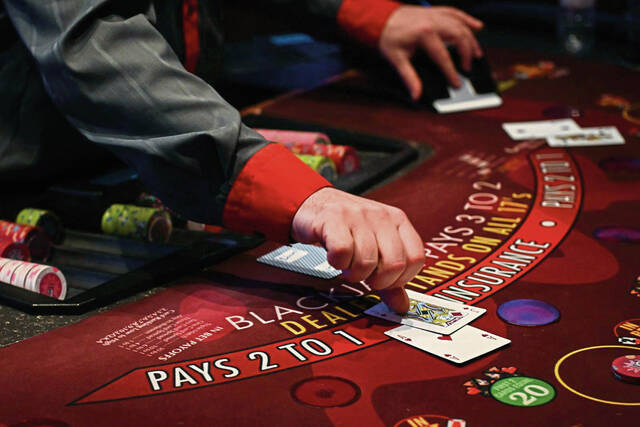
Pennsylvania’s gambling revenues reached nearly $5.7 billion by the end of 2023. It’s the highest yearly total to date, up 9.3% from 2022. And taxes on that gambling brought in $2.3 billion in 2023, up 10% from $2.12 billion in 2022.
But a researcher at the Allegheny Institute for Public Policy says there’s a cautionary tale in those numbers.
“There are two issues coming to Pennsylvania that may threaten the gaming industry,” says Frank Gamrat.
“The first is the proliferation of ‘skill games’ in neighborhoods around the commonwealth,” the Ph.D. economist says.
Skill games currently do not fall under the purview of the Pennsylvania Gaming Control Board, thus there is no data available as there is for casino games.
“Revenue from skill games is lumped in with other revenues for an establishment and likely taxed as corporate net income,” Gamrat says. “But they are showing up in places like bars, restaurants and convenience stores.”
He says there are an estimated 15,000 skill games across the commonwealth while there are an estimated 25,000 retail slot machines at sanctioned casinos.
“Skill games may start to make a dent in the retail slot figures,” the economist observes.
Then there’s the Keystone State’s dropping population, “down an estimated 10,400 since 2020, and in the largest counties, Philadelphia (-16,300) and Allegheny (-7,800),” Gamrat reminds.
“If the population losses continue in Pennsylvania, gaming revenues could start to drop.”
Pennsylvania’s legalized gambling industry is nearly 20 years old. Gamrat says state and local governments have gotten used to the steady stream of revenues.
“Gaming money bailed out the Allegheny County Airport Authority as it helped retire the debt on the current terminal and is helping to fund the next terminal,” he says. “The Economic Development and Tourism Fund provides $10.3 million per year to various projects around Allegheny County.”
And with 19 casinos and six gaming options, Gamrat says it seems like there’s no end in sight to the good times, adding that even neighboring New Jersey and Ohio are seeing continued growth.
“But what is quickly forgotten is that every dollar spent on gaming is a dollar not spent on other goods and services,” Gamrat reminds. “Gaming is a leisure activity; it is likely taking away revenue from other leisure activities.”
Additionally, Gamrat notes there remains no data on problem-or addictive-gaming behavior or any estimate on the social impact of gaming.
“Something to always consider as social programs may require taxpayer money to support,” he concludes.